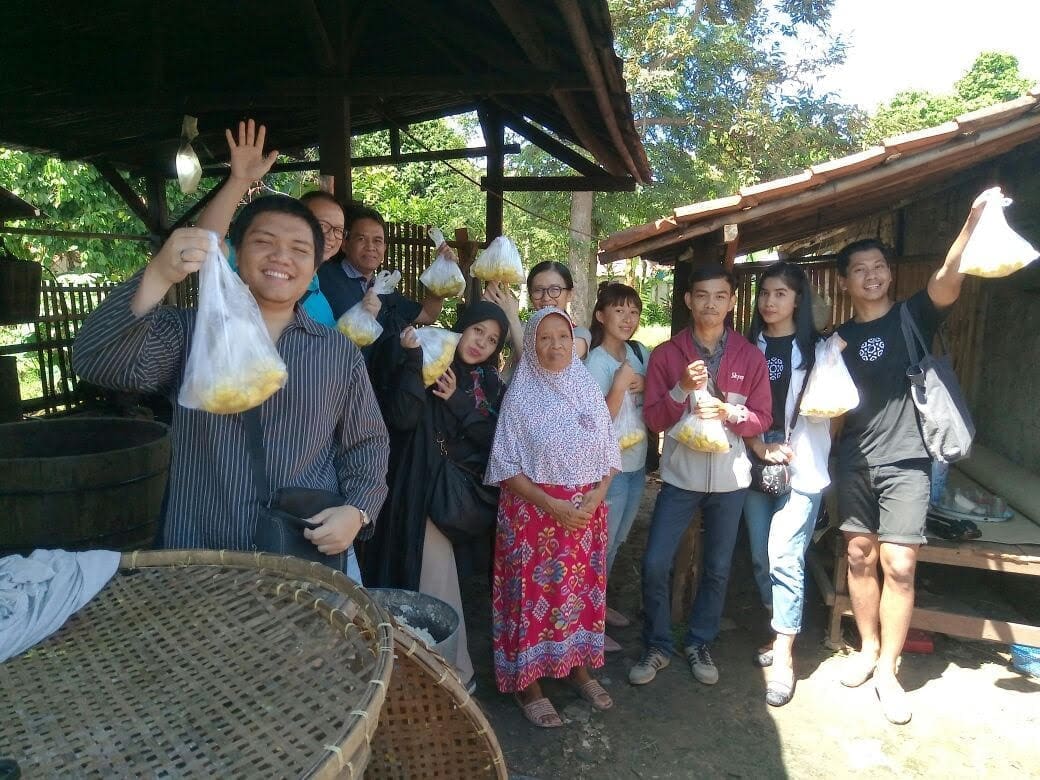A mother and working woman, Nina, no longer allows her children to watch national television. SHe prefers to subscribe to cable TV as a watch for her young son, an elementary school student. She is worried because of the proliferation of TV shows whose content is often not child-friendly. .
One issue that worries her the most is the existence of cigarette advertisements on national TV. She was unwilling to have cigarette advertisements plastered on TV, let alone watched by children. Moreover, it affects smoking behavior in children or the increasing number of passive smoking in children, which is now more than 40%.
“We still allow cigarette advertisements on TV. We are very behind (compared to the US and European countries, which no longer allowed any broadcast cigarette advertisements). Children don’t need cigarettes, let alone the advertisements,” said Nina during a discussion on Healthy Broadcasting for Children reflecting on 20 years of the Broadcasting Law, Saturday (23/7).
Moreover, Nina now lives in Kediri, East Java, which is the center of Indonesia’s big brand cigarette industry. The choice to divert shows that show cigarette advertisements is now inevitable. She understands that this is a privilege for her as a parent because many parents around where she lives cannot access cable or subscription TV. Thus, the most accessible viewing option is national TV which uses public frequencies.
“Cable or subscription TV options are still limited… I really appreciate friends, including the KNRP (National Coalition for Broadcasting Reform), who continue to fight for healthy national TV,” he said.
Lintang Ratri from KNRP does not deny that until now, national TV shows still have many problems. One of them is the placement of children’s program broadcast hours that do not match the children’s rhythm.
SHe gave an example of the broadcast schedule on ANTV as of May 22, 2022, with the show titles Oscar’s Oasis (airing 04.30 WIB) and Rabbids Invasion (05.30 WIB).
“It airs precisely at ‘ghost’ hours. Who’s watching?” Ratri said.
Not only that, but Lintang also found cartoons whose content was not for the children’s segment. For example, Boruto’s (Naruto) story is not suitable for children’s age because the problem is quite complex and complicated regarding the relationship between children and fathers. Not to mention soap operas or reality shows that target children and teenagers, but the content is not age appropriate.
SHe continued there is still a lot of “homework” regarding child labor in the entertainment industry and perpetrators of crime and advertisements, including cigarette advertisements, as is the concern of parents like Nina.
“It’s as if children haven’t become a concern for our media. The issue of healthy broadcasting is a common issue. This is our interest. We don’t want someone to say, “If you don’t like it, just change the channel!” Lintang said.
Lintang emphasized that the TV remote is indeed in the hands of the viewers. However, it is not the public who must continue to “give in” to unqualified public TV shows, including the issue of children’s rights. However, his party encourages national TV to improve its quality. This is because national TV is a public frequency that must be educational and child-friendly.
“These TVs lease frequencies from the public, from the state. So, they have to provide quality shows. We can protest loudly, TV must listen to children’s needs,” he said.
Two Decades of Broadcasting Law: Must Be Healthier and Educating Children
Two decades since Broadcasting Law No. 32/2002 have been present in Indonesia. However, many issues remain a shared commitment and struggle, especially regarding children’s rights to access quality public broadcasts.
Reported by Independent.id, the journey of the Broadcasting Law to date has not been without polemics. At the beginning of 2022, there was talk of making a Broadcasting Bill which is an amendment to Law No. 32/2022 concerning broadcasting which is already 20 years old. The proposed amendment to this bill has been submitted since the DPR for the 2009-2024 period but has consistently failed to be passed as a bill.
The critical issue for the bill’s ratification regarding digital migration is the implementation of multi-mux or single-mux digital broadcasting, which later ended the debate with Job Creation Law No. 11 of 2020. Digital broadcasting migration in the Job Creation Law is stipulated by implementing multi-mux. Another discourse that emerged in the broadcasting bill is an effort to regulate broadcast content that appears on digital platforms (Youtube, FB, and so on) as digital media are currently emerging. Impact? Of course, the broadcasts will be more accessible, especially for children.
Regardless of the situation, Deputy Chairperson of the Indonesian Child Protection Commission (KPAI), Rita Pranawati, said broadcasters in Indonesia must be loyal and uphold the four clusters of child protection. Such as, providing child-friendly information, education, utilizing free time, and cultural activities that are beneficial to children’s development.
Rita revealed that the number of children in Indonesia is a third of Indonesia’s population, or around 84 million. Children in broadcasting are children who watch, children who are in broadcasts, or children in the television industry. Therefore, the substance of the broadcast must be child-friendly.
“Broadcast content must provide protection and empowerment for special audiences, such as children and adolescents, by broadcasting programmes at the right time, and broadcasting institutions must include and/or state the classification of audiences according to broadcast content,” said Rita.
On the other hand, Rita also emphasized that TV shows must pay attention to advertising promotions that are not child-friendly, such as promotions for liquor or the like and addictive materials or substances, cigarette promotions that demonstrate the appearance of cigarettes to things that are contrary to societal morality and religious values and / exploitation of children under the age of 18.
“Broadcast commercial advertisements that are broadcast on broadcast programs for children must comply with broadcast standards for children,” he said.
Diena Haryana, SEJIWA Foundation, added the impact of broadcasts on children cannot be underestimated. Including their psychology that can contribute to the growth of flawed characters. For example conflicts in shows watched by children can cause emotional and behavior disturbances.
“Whereas(supposedly) we should show a world full of love, peace, tolerance, care, and others,” said Diena.
Therefore, Diena invites parents of children to continue to accompany their children when watching TV or digital broadcasts. Because what children see, hear, and read can influence their character and have a significant impact.
“Films for children, which are of high quality and made by the nation’s children, deserve to be broadcast. The ability of young people to make quality films is excellent. They can be empowered (enriching children’s content on TV),” he concluded.
Research on Children’s Shows on Television
In a panel discussion on “The Threat of Child Amnesia Broadcasting” on June 7, 2016, a researcher from the Children’s Media Development Foundation (YPMA), Hendriyani, once said that so far, many children have been victimized on TV because of unclear rules regarding this matter, regarding infotainment shows. Broadcast during children’s viewing hours, or there are no rules regarding advertisement broadcast time.
As a result, all children watched shows that should be specified for adults.
Therefore YPMA has classified TV shows in 3 terms: safe shows, cautious shows, and shows that are harmful to children.
A number of studies on children and the influence of television and gadgets state that children who access too much TV and gadgets will affect the child’s behavior, affect the child’s psychology, and also their time usage. We often see children become busy watching TV and using gadgets that they forget to study and play with their friends. So, this research then recommends that:
1. Children aged 0-2 years: may not watch TV and access gadgets
2. Children aged 2-3 years: only allowed to watch TV and access gadgets for 30 minutes daily.
3. Children aged 3-5 years: only allowed to watch TV and access gadgets for 1 hour per day.
4. Children aged 5-18 years: only allowed to watch TV and access gadgets for 3 hours per day.
Hence, Hendriyani said that the TV industry should see this as a problem in presenting broadcasts. So far, many shows that are considered suitable for children, for example, Sesame Street or Jalan Sesama, but only a few children’s TV industries or Production Houses have worked on films like this.
In Addition, advertising rules must also be clear, because so far too many Indonesian children have not received protection in watching programs and advertisements.
Besides parents who have to accompany and explain to children about TV shows and gadgets, the school environment and teachers must also contribute positively to children’s awareness of watching TV.
Beyond that, the media is an essential factor influencing children’s lives, so the media industry must be committed and not provide shows that could harm children’s development.













